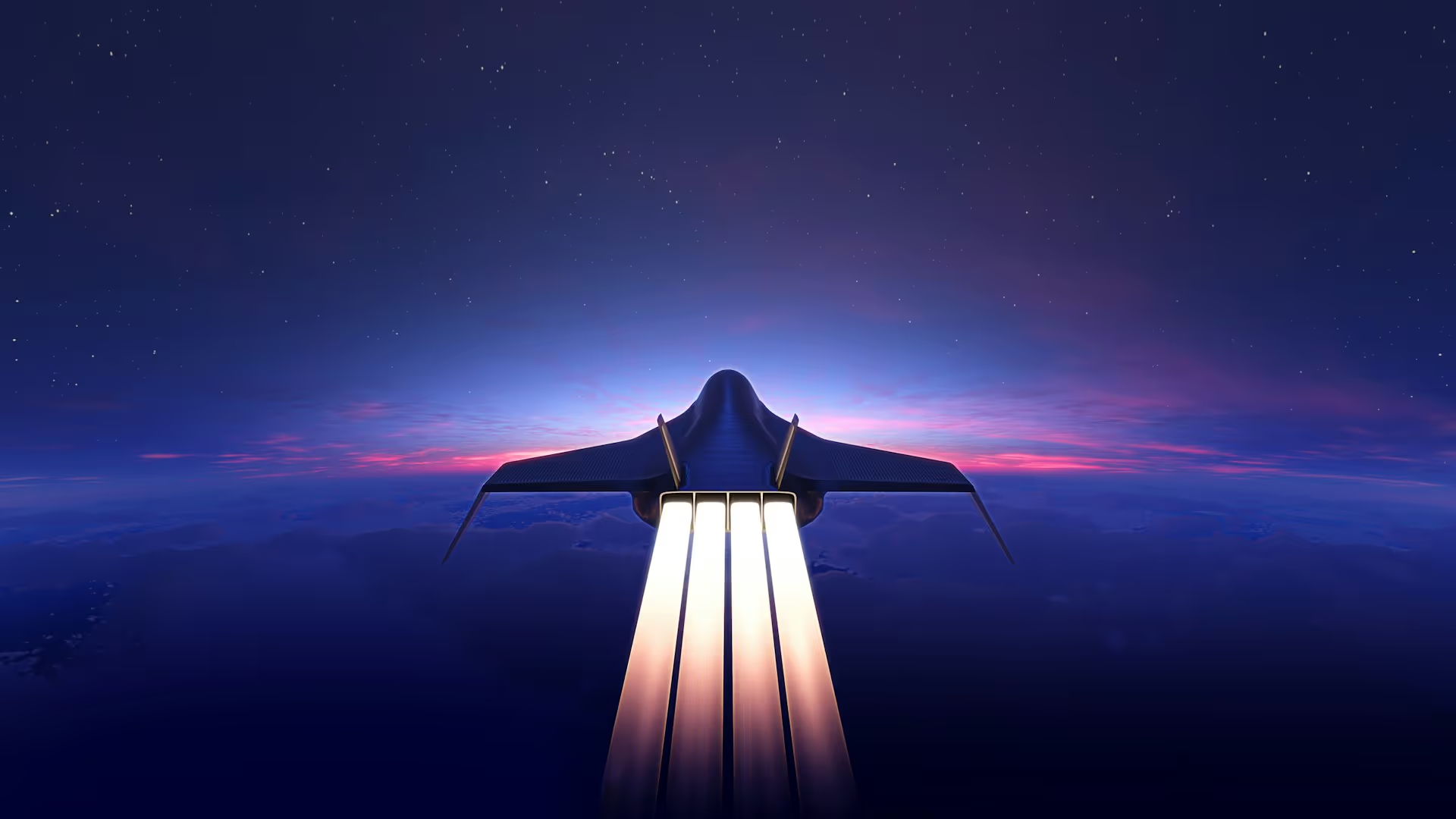The Return of Speed
On October 24, 2003, Concorde made its last commercial flight, closing the chapter on supersonic passenger travel. For decades since, commercial aviation has been defined not by speed but by efficiency, comfort, and cost reduction. Yet the dream of traveling faster than the speed of sound never died.
Today, a new generation of aerospace startups and manufacturers are working to revive supersonic flight — and this time, they promise to make it cleaner, quieter, and more accessible. The race is on to define the next era of air travel, and with it, the rebirth of aviation’s most glamorous frontier.
Concorde: A Cautionary Tale
The Concorde was a marvel of engineering — capable of cruising at Mach 2, cutting transatlantic travel times in half. But its legacy was mixed. The aircraft was expensive to operate, served only niche luxury markets, and was plagued by noise and environmental concerns.
Its demise highlighted the challenges of supersonic travel: high fuel costs, limited seating capacity, and the infamous sonic boom that restricted flight paths. For decades, these hurdles seemed insurmountable.
But advances in materials, aerodynamics, and propulsion are rewriting the rulebook. The new wave of supersonic projects isn’t just chasing speed — it’s solving the problems that grounded Concorde.
The New Supersonic Contenders
Boom Supersonic
Denver-based Boom Supersonic has become the poster child of the revival. Its upcoming aircraft, Overture, is designed to carry 64–80 passengers at Mach 1.7 across 4,250 nautical miles. With backing from major investors and pre-orders from airlines like United and Japan Airlines, Boom is positioning itself as Concorde’s spiritual successor — but with a sustainability twist. The company promises Overture will run on 100% sustainable aviation fuel (SAF) and be net-zero carbon from day one.
NASA & Lockheed Martin – The X-59 Quiet Supersonic Transport (QueSST)
One of the biggest breakthroughs in supersonic development is NASA’s X-59 QueSST, developed with Lockheed Martin. Its unique design minimizes the sonic boom to a “sonic thump” — a game-changer for regulatory approval over land. If successful, this could open supersonic routes across continents, not just oceans.
Spike Aerospace
Spike Aerospace is pursuing a different strategy with its Spike S-512 jet, aimed at business travelers. Designed for 12–18 passengers, it promises Mach 1.6 speeds and luxury interiors. The company’s goal is to make supersonic travel a premium business tool rather than a mass-market product.
Other Players
Startups like Exosonic (working on supersonic executive transport) and Hermeus (developing hypersonic Mach 5 aircraft) push the boundaries further, hinting at a future where both speed and versatility redefine aviation.
The Sonic Boom Problem
One of Concorde’s greatest limitations was the sonic boom, which forced supersonic flights to operate mostly over oceans. The noise — a thunder-like clap produced when an aircraft exceeds Mach 1 — made supersonic travel politically and environmentally unviable over land.
NASA’s X-59 project could be a turning point. By reshaping the fuselage to distribute shockwaves, engineers believe they can reduce booms to a sound no louder than a car door closing. If regulators accept this, supersonic travel could expand from oceanic routes to global networks, unlocking massive commercial potential.
Sustainability: Supersonic’s Make-or-Break Factor
In an era where aviation is under intense scrutiny for its carbon footprint, sustainability is the critical challenge. Concorde consumed up to five times more fuel per passenger than subsonic aircraft. Repeating that mistake would be unacceptable today.
The new supersonic contenders are banking on Sustainable Aviation Fuels (SAF), carbon offsets, and aerodynamic efficiency to address this. Boom Supersonic, for instance, has committed to SAF integration as a core feature, not an optional add-on.
Still, questions remain. Can SAF scale to meet the demands of both supersonic and conventional aviation? And will supersonic jets, even if sustainable, be viewed as elitist luxuries in a world striving for equity in climate responsibility?
The Economics of Speed
Another major hurdle is cost. Supersonic flights are inherently more expensive to operate, raising the question: who will pay for them?
Boom and others argue there’s a strong market for premium transatlantic routes, where passengers are willing to pay a premium for halved travel times. United Airlines’ pre-order of 15 Overture jets suggests mainstream carriers believe supersonic travel could be viable for business travelers and high-end leisure markets.
Over time, as technology matures and scales, costs may come down. But in the near future, supersonic travel will likely be positioned as a luxury and business service, not a mass-market product.
The Geopolitical Race
Supersonic development isn’t just about technology — it’s about national prestige and global competition. The U.S., Europe, China, and even emerging players in aerospace see supersonic and hypersonic technologies as strategic assets.
While startups like Boom and Spike lead in commercial aviation, military programs in the U.S., China, and Russia are advancing hypersonic technologies at breakneck speed. These innovations often cross-pollinate, meaning breakthroughs in defense could eventually fuel commercial supersonic travel — and vice versa.
The Consumer Experience: Glamour Reimagined
Part of Concorde’s allure was its exclusivity and luxury. The new generation aims to blend speed with sustainability and comfort.
Design concepts highlight spacious cabins, panoramic digital windows (replacing traditional ones for structural efficiency), and advanced connectivity so passengers can work, stream, or even collaborate in real time across continents.
If successful, the supersonic revival could reintroduce a sense of glamour to air travel that has largely faded in today’s cost-driven industry.
Challenges Ahead
- Regulation: Even if sonic booms are reduced, international regulators must approve supersonic flights over land.
- Infrastructure: Airports may need upgrades to handle supersonic jets.
- Public Perception: Concerns about elitism, safety, and environmental impact could limit adoption.
- Timeline: Many promised launches are still several years away, and aerospace projects are notorious for delays.
The supersonic dream is alive, but it faces turbulence on its journey back.
The Future: Toward a New Golden Age of Aviation
If the new generation succeeds, supersonic travel could herald a second golden age of aviation. A London-to-New York flight in three and a half hours, Los Angeles to Tokyo in five, Sydney to San Francisco in under seven — possibilities that would redefine global connectivity.
Beyond convenience, this revival could reshape industries. Business, tourism, and even geopolitics could shift in a world where distance shrinks dramatically. The ability to “collapse geography” at scale would be transformative.
The Supersonic Gamble
Supersonic travel represents both aviation’s past glory and its potential future. The lessons of Concorde loom large: speed alone is not enough. To succeed, the next wave must deliver quiet, clean, and economically viable solutions.
The race is no longer just about flying faster — it’s about flying smarter. If the contenders succeed, the sky may once again echo with the sound of commercial aircraft breaking the sound barrier. And this time, the supersonic age may be here to stay.



.avif)


